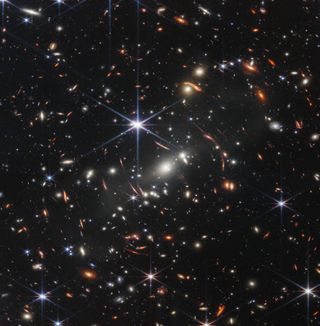You don’t have to be a scientist or math whiz to teach about the James Webb Space Telescope, says Denise Davis, NASA's education specialist.
NASA has a variety of free standards-aligned, educator-vetted resources for teaching about the James Webb Space Telescope that can assist high school science and STEM teachers working with advanced students as well as elementary school teachers who may not have much science background themselves.
“One of the goals that we had in mind when we were creating resources for teachers was to make it easy, to make it unintimidating,” Davis says.
With the help of these resources, the James Webb Space Telescope–and the amazing images it’s collecting–can be the perfect engagement tool for teaching astronomy, science, STEM, and more. scientists, Davis says. Teachers should also read our Teaching About James Webb Space Telescope story.
1. The James Webb Space Telescope STEM Toolkit | NASA

This educator toolkit offers a wealth of resources organized by grade level that range from quick facts about the James Webb Telescope to lesson plans. The toolkit has been designed with the busy working teacher in mind, so educators can pick and choose a short exercise to use as a warm-up activity or can go more in-depth if they want, Davis says. Lesson plans cover topics such as the science of telescopes and the definition of a galaxy.
2. Webb Virtual Platform
Launched by the Webb team when the telescope’s first stunningly clear images of ancient galaxies were released, this platform provides a variety of interactive resources dedicated to Webb. While registration is required, it is free and easy. Those who register for the platform get access to a library, a podcast series, and expert lectures, and can explore a virtual James Webb-themed campus. “That's a fun and engaging way to really get into the science of Webb,” Davis says. There’s also a virtual packet that educators can use as a resource with their students.
3. Educator Webinars

Educators looking to incorporate more material inspired by James Webb Telescope or other NASA projects should consider attending one of the webinars hosted through NASA’s Educator Professional Development Collaborative (EPDC) | NASA contract with Texas State. Multiple weekly webinars are available on various space-related topics designed to help educators from K-12 or higher-ed utilize NASA’s professional learning resources.
4. Educator Community of Practice: NASA CONNECTS
By signing up for free to join this community educators will get access to additional James Webb Space Telescope resources. More importantly, they’ll be connected with fellow teachers and NASA professionals to share ideas and best practices. “You have those very elite, NASA-ified teachers who know where everything is and can easily mine the gold,” Davis says. This community allows those teachers to share ideas with other teachers who are less familiar with NASA teaching materials.
5. Next Gen STEM | NASA
This resource includes many materials for K-12 STEM lessons linked to NASA projects. These include the James Webb Space Telescope as well as other projects such as the Artemis mission to the moon, a human spaceflight program aimed at returning astronauts to the moon in the not-too-distant future.
6. James Webb STEM Star Link Video Series
This series of 30-minute English- and Spanish-language videos features professionals who helped build the James Webb Space Telescope. In the videos, these engineers and scientists explain their contributions and how they got into the STEM field. Educators can watch these videos with their students to give them an idea of what some STEM careers look like. Educators should also keep an eye out for an upcoming YouTube series on Webb that will feature much shorter videos that profile James Webb Space Telescope instrument scientists, Davis says.


